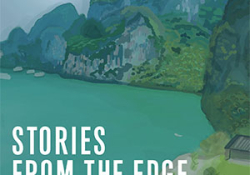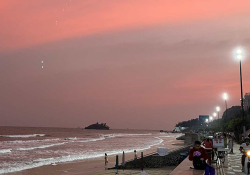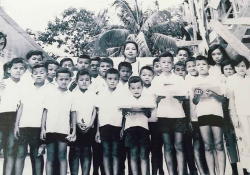Living in the Tenses in Saigon
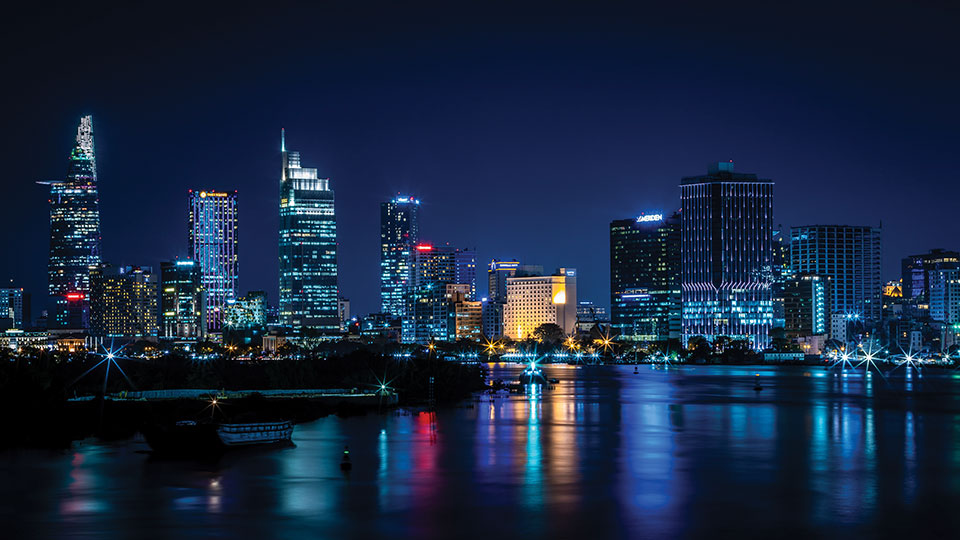
Not far from where I live now, a kilometer or so, there’s that dock from which my father, a lieutenant general in the South Vietnamese army, boarded a crowded naval ship on the day that Saigon fell and set out to sea. A little further out, in District 10, there stands my childhood home in which I once lived with my family and our three dogs, and from which my mother, sister, and I fled to America, two days ahead of my father.
I have not seen the house since I moved back. I have driven past the outer walls of my old school, Le Qui Don, and the nearby, now dilapidated country club—Le Cercle Sportif—in whose smallest (and coldest) of three swimming pools I lazed away many a happy sun-drenched afternoons as a child. But I haven’t found the resolve to enter either club or school. I see them all so clearly in memory, in dreams and reveries, having written about my losses and gains in books and radio commentaries back in America, that it felt like an act of betrayal were I to go to any of these places in actuality.
I tell you all this because, while I have come back to the city in which I was born, I feel as if I live in yet another, a modern metropolis running on steroids, and not at all the sleepy town of my childhood memories. And it is rushing toward some complex cosmopolitan destiny at a breakneck speed.
It’s been a long, long time since I called Saigon my home. Still, here I am, steep in middle age, tentatively, trying to take up roots once more.
And in Saigon, I discover that I live in many different time zones all at once.
In the present: an energetic city where moneymaking is the name of the game. In it, I am a mere newcomer, an émigré of sorts, who needs to build new connections, and learn new idioms—the ropes. Despite knowing the language I struggle to navigate this enormous city, which constantly expands and changes. The various districts, neighborhoods, its young and fast-shifting cultures—I try to understand the complex society and various social strata that weren’t here before. The pop stars, the novels, the TV series, the new films, the social-media stars—I know nothing of them. Still, I try to listen to its rhythm, the conversation, the lyrics. Slowly, very slowly, I make inroads.
More of the present tense: You can see it outside my window—high-rises lining the river, gleaming and shining at night like a promise. You can also hear it: day and night, the din of construction, the roar of the motorcycles. If I once contrasted backward Vietnam to modern America, I now need to compare a new modern world versus an aging modern world; these days the two countries seemingly run on parallel tracks.
In a coffee shop where I go in the morning to write, I spend quite a bit of time eavesdropping. The phrase một tỷ is mentioned the most. And it means one billion dong, around US$42,000. It is often used to describe prices of real estate, as in “that property is worth about $70 billion and you need to get it before it goes up.”
It follows that the other word is bán—or to sell. “Bán mau em oi”—“Sell it quickly, Sister!” The middle-aged lady tells this to her friend, so I wrote it down on my laptop. “Don’t wait. It will become lukewarm next week.”
Property is the name of the game here. That is, buy, buy, sell, sell is the point. Indeed, the majority of the conversation, one way or another, somehow has to do with money, and money usually involves real estate dealings. “Let me tell you how to get him to sell.” “Don’t get cheated—I’ll get my company to back you.” Another sentence I wrote down after hearing someone saying it rather loudly at the next table.
Though I buy and sell nothing, I bask in this excitement; it’s an energy that is seductive and admittedly contagious. I watch with awe as the wealthy spend their money here in such abandon at high-end nightclubs and restaurants. Up the street from where I live, a shopping mall recently opened. It sells Lamborghini and Rolls Royce at its posh entrance. People are always taking selfies with the sparkly cars in the background.
Yet some nights, strolling the darker alleys, I am reminded that so many more remain mired in humiliating poverty—the hunched backs, the tattered clothes, the skin-and-bone bodies, squatters with cigarettes in mouth, a melancholic ballad on the radio.
NATURALLY, I ALSO LIVE in the past tense. With a memory edged in sadness, edged in joy of a wartime Saigon as if it’s entirely elsewhere, a sleepy town lost in time. Sometimes it comes unannounced into the present. The other day on my way to a dinner party, my taxi drove past a building that I instantly recognized despite all these years. “You came into this world at this hospital, in that room.” My mother had said it many times whenever our car drove past it during the war. As a child, I would often look up in wonder. There on that second floor, that room with its wooden shutters always wide open, I came into this world. An odd moment, just like that, and the past and the present intertwined: Old Saigon superimposed itself on New Saigon, and a rush of various memories of a tropical childhood overwhelmed and made me slightly breathless.
Old Saigon superimposed itself on New Saigon, and a rush of various memories of a tropical childhood overwhelmed and made me slightly breathless.
Especially when it rains: thunder claps like bombs, then followed by the roar of the monsoon on a tin roof of a modest café, under which I sat one afternoon waiting for a friend while the radio echoed an old ballad of Trịnh Công Sơn’s song “Tình Nhớ”” (Memory of love), sung by the incomparable Khanh Ly. Transported, I see myself as that young boy again, reading his French comic books under the veranda with its tin roof, and over which the rain roared like a million tiny galloping horses. A flash of a thousand wartime memories. At such a moment I am completely displaced: am I an American writer working on his laptop waiting for a friend, or am I still that child who once believed the borders were real, impossible for many a mortal to cross? Yet he did dream, didn’t he, like his childhood hero Tintin, of going on adventures in impossibly faraway lands?
Then, magically, the little boy’s dream came more or less true. And he grew up and circumnavigated the globe. What to do with the past? Let me introduce to you my celebrated Vietnamese American artist friend, Dinh Q. Lê. He left Vietnam in the late 1970s as a young teenager but has come back and lived now in Vietnam for over two decades. Lê told me that “after the war ended, there was a deliberate attempt to erase the past in the South.” One of his chief obsessions, then, is to tell the narrative of loss. After all, people who lose wars are cursed to remembrances of traumas. The fate of exile is that it robs you of a clean, unobstructed forward movement; the forward arc always entails constant backward glances.
Yet there’s an almost collective distrust of the past here in Vietnam, Lê said, especially among the young. As he put it, “They only get the state’s version of events, and they know it’s propaganda. But they don’t know what the real story is, so they’d rather not trust any story.”
Among his many Vietnam-related projects, Lê collected a ton or so of black-and-white photographs that once belonged to those who fled at the end of the war, surely some of my family’s images among them. The photos eventually were sold in a “pre-75” market, 1975 being the year when the war ended and the exodus began. His work, displayed recently in the San Jose Museum of Art in an exhibit called True Journey Is Return, speaks of fragmented lives, lost homes, lost history. In one particularly poignant and powerful piece, “Crossing the Farther Shore,” faces from black-and-white photos of Vietnamese—portraits, happy moments, family gatherings, picnics, weddings—are strung together like a mosquito net and stare out from a distant past.
He is a celebrated artist in the US and in other countries. But if Lê said he absolutely belongs in Vietnam where much of his work is considered too political to be shown, he meant he belongs here the way I do: he commutes back to America every so often, and he travels the world to show his work. He belongs only in a sense that he can leave anytime he wants. Such, alas, is the weird space in which so many of us who came back belong. Indeed, we never belonged to one time zone.
Vietnam is highly mobile now. The country is booming, both a manufacturing hub and a hot tourist destination. And as it opens its doors wider and wider, many foreigners are making it their home, and among them Viet Kieu (overseas Vietnamese). Many have done well, too, investing and opening businesses, especially those who had come back and set down roots years earlier. To them I am a relative newcomer, and as such there is much advice. Chief among them: “Try your best not to live in the past.”
Easier said than done. Like many Viet Kieu who remember the war, we are cursed with a superimposed memory of this city, where the river has a tendency to run backward, toward the bygone. And sometimes over the city we pored: names of streets that changed, which colonial buildings came down to be replaced by a high-rise, which restaurants once served the best pho during the war, which stalls the best banh mi, the dramatic evacuation at the end of the war, the bombs, the corpses.
The past can be a trap. Lê admits there’s a quagmire in telling the story of loss. One can get ensnared in the past by staring at it too long, and the burden of memories can keep him from moving forward, from seeing and doing new things. “I’m tired of the Vietnam story,” he told me over dinner one evening. “Me too,” I said. Then we continue to talk about Vietnam.
“I’m tired of the Vietnam story,” he told me over dinner one evening. “Me too,” I said. Then we continue to talk about Vietnam.
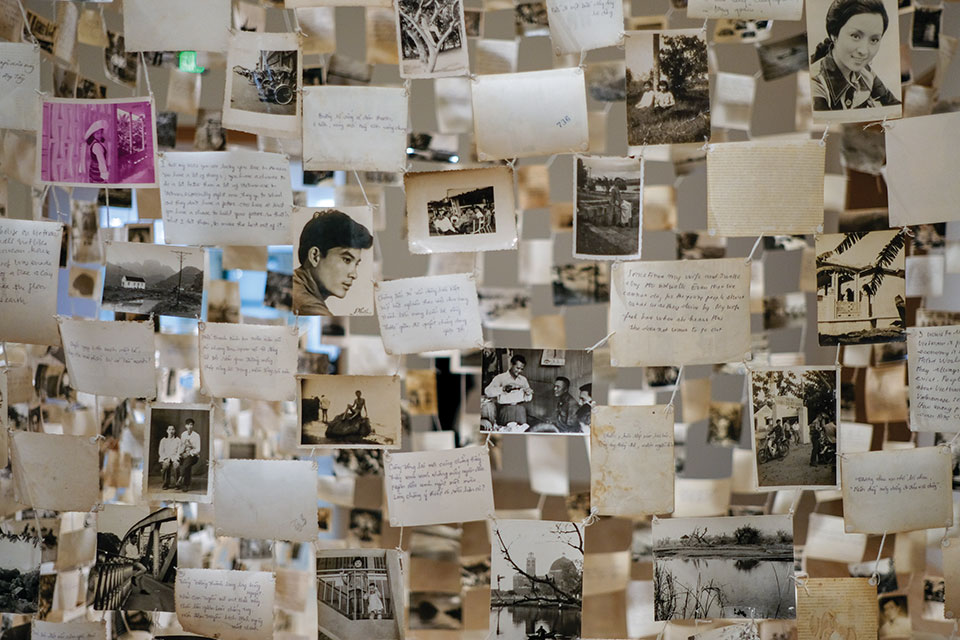
THUS THE future tense.
I carry memories of losses and exile—my childhood in old Saigon in wartime, my abrupt departure; I wear them all like a scar, or a medal. But I am quite aware that I am also bringing the larger world back to my birthplace. Mine is after all a complicated sense of home: given that the bulk of my life has been spent in America, writing in my third language (after Vietnamese and French), home is rooted in a sense of plurality, in a sense of I am both this and that. And more.
And if there’s one thing I am certain of after all these years, it is this: there is no such thing as coming home for those of us who were once exiled. There is, however, something else the returnee can do: build a new one from scratch.
And if there’s one thing I am certain of after all these years, it is this: there is no such thing as coming home for those of us who were once exiled. There is, however, something else the returnee can do: build a new one from scratch.
Diverse, pluralistic, and complex are what Saigon has become. A multiverse. A city of multiethnic enclaves—Japan town and Korea towns and Chinatowns spring up as I type. A city of immigrants. And a city full of returning Vietnamese coming home from abroad.
And it is full of young people, eager to surge ahead.
Saigon is therefore both forgetful yet secretly longing for its own history. Or rather, Saigon’s public story of itself is of a city liberated by the Communist army at the end of the Vietnam War. In that story her name is Ho Chi Minh City, a stale narrative of collectivism. In truth, her nature has always been feminine and individualistic. Her power is alchemy. She turns foreign ideas into local fares. She seduces stern conquerors and over time turns them into businessmen and epicureans with savior faire; she takes in their ideology and idolatry, gives them back a tad of hedonism instead.
Diverse, pluralistic, and complex are what Saigon has become. A multiverse. And it is full of young people, eager to surge ahead.
STANDING IN CONTRAST to the public narrative of itself—the male version of events—are the private dialogues shared by the city’s inhabitants: the story of desires and ambition, thirst for knowledge, yearning to travel, wanting to better one’s self, dreaming of owning a house, working toward sending one’s child to study abroad, a kind of American dream.
Such as it is, Saigon, growing ever more complex, is in desperate need of a new framework.
That is my guidepost, my re-entrance.
A professor at a college here recently asked me to give a talk about the history of the Vietnamese people in America. Another teacher at an international school asked me to teach a writing workshop to her students. “Tell them how to think outside of the box.” A café owner who organizes talks invited me to read from my work. I tell listeners about my American life, my adventures abroad. I show images of myself as a child in this selfsame city. I share my discoveries of the self: that it is multilayer and not etched in stone.
Slowly, it feels that I am of use here. I look forward to sharing thoughts and ideas widely the way I look forward seeing Dinh Lê’s work on lost memories being enjoyed by the people of this city. I look forward to sharing my stories with a bigger audience, perhaps, yes, in my mother tongue.
Soon I will make my pilgrimage. I will enter the old school. I will walk around the old courtyard, find shade under the tamarind trees and listen to echoes of my childhood. I will enter the old country club and mourn a way of life long lost. I will stand in front of the old house, too, in whose verandas I once read my books and whiled away the hot afternoons, my three dogs at my feet.
I will incorporate all this into a new story. I will try to build bridges between all these fragments, across time zones and languages. I will try my best not to re-create or stay mired in the past. Instead, I will marry the tenses as if they are bricks and mortar and build a new home here.
Saigon

